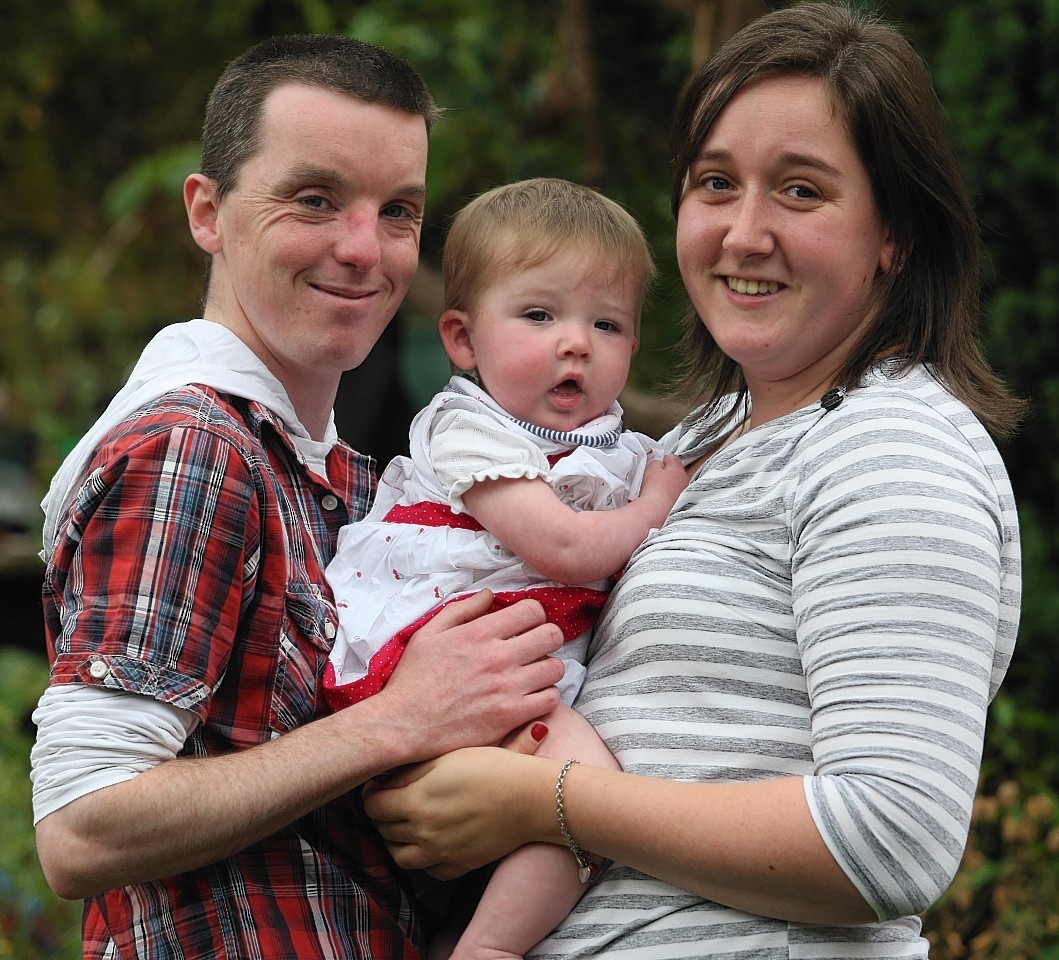A Black Isle couple who could both have the gene for a devastating disease have ensured their baby girl did not inherit it.
Rachel and Martin Philip, of Rosemarkie, discovered a procedure which involved creating and screening an embryo which allowed their daughter Sadie to be free of Huntington’s disease.
Childcare practitioner Mrs Philip carries the gene for the incurable condition and support worker Mr Philip lost his father to the condition.
Huntington’s disease is a hereditary progressive condition which causes changes to muscle control and thinking processes and can include long-term mental health issues.
A test revealed that Mrs Philip had the gene, meaning any child the couple wanted to conceive naturally would have had at least a 50% chance of developing the terminal condition.
Following the discovery, the couple asked about the options available, including fostering and adoption, but were also told about a pioneering genetic screening called pre-implantation genetic diagnosis.
They were referred to the Assisted Conception Unit at Edinburgh Royal Infirmary.
After two years of specialist IVF treatment, medics helped the couple produce 12 viable embryos, and one of three eggs which was shown to be disease-free was implanted into Mrs Philip’s womb.
In November 2014, Sadie was born at Raigmore Hospital in Inverness.
Now, nine months on, the couple hope they can inspire other parents concerned about passing on hereditary conditions to their children.
Mrs Philip, 27, said: “No parent wants to pass such a condition on to their children.
“Martin and I have grown up with the weight of Huntington’s on our shoulders and, while we have done our best not to let it alter how we live our lives, we were worried about how it might affect our kids.
“When we found out I had the Huntington’s gene, we both felt it would be too much of a risk to conceive any child naturally – the odds of our baby inheriting the gene were too high.
“I had heard about designer babies but never realised it could be used to help couples like us.
“Now, four years on, we have a beautiful daughter. She is our little miracle and we feel so lucky to have her.”
